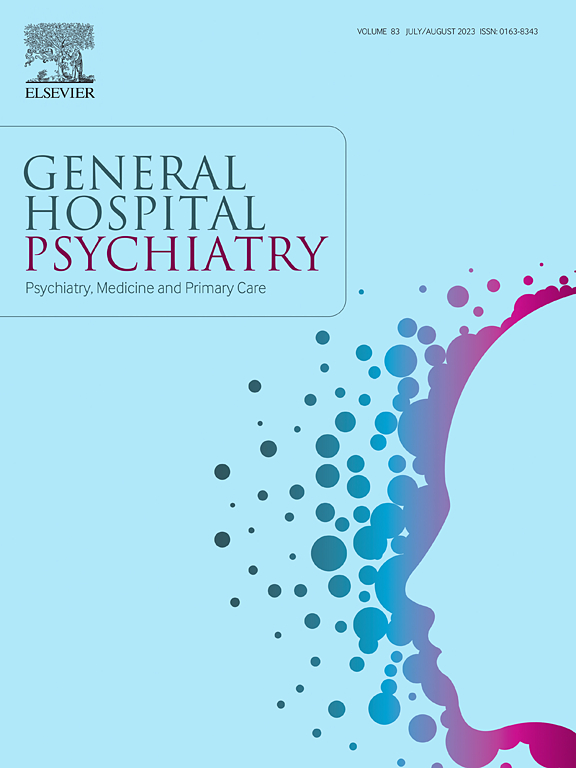Sex differences in the comorbidity between attention deficit-hyperactivity disorder and posttraumatic stress disorder: A systematic literature review and meta-analysis
IF 3.7
2区 医学
Q1 PSYCHIATRY
引用次数: 0
Abstract
Objective
Attention Deficit-Hyperactivity Disorder (ADHD) and Posttraumatic Stress Disorder (PTSD) are often comorbid and share a common core of symptoms. However, sex and gender-related factors significantly influence their prevalence, clinical presentation, and diagnosis. Here, we conducted a systematic literature review and meta-analysis to examine sex differences in ADHD/PTSD comorbidity during childhood and adulthood.
Methods
A scoping review of PsycINFO and PubMed yielded 13 eligible studies with complete outcome data. We conducted fixed-effects meta-analyses of the sex-stratified prevalence of ADHD/PTSD using pooled odds ratios (OR) with a 95 % confidence interval (CI). Fixed-effects subgroup analyses were performed using age as a subgroup. Effect size heterogeneity was assessed using the I2 index and Cochran's Q test.
Results
In the whole sample (N = 13,585; F = 7005, M = 6580), the diagnosis of ADHD/PTSD was significantly higher in females than in males (OR = 1.32, p = 0.02). Between-study heterogeneity was low-to-moderate and not significant (I2 = 41 %; p = 0.06), validating the fixed-effects model. Age-stratified subgroup analyses revealed higher ADHD/PTSD odds in females compared to males only in adult populations (OR = 1.41; p = 0.01). Additionally, females were more likely to be diagnosed with both disorders in studies where ADHD was the primary diagnosis (OR = 1.60; p = 0.002), and in studies employing structured clinical interviews as diagnostic tools (OR = 1.46; p = 0.009).
Conclusions
Our study is the first to show that the association between ADHD and PTSD is stronger in females, suggesting that ADHD may increase risk for PTSD in a sex-specific manner.
注意缺陷多动障碍与创伤后应激障碍共病的性别差异:系统文献回顾与荟萃分析
目的 注意力缺陷多动障碍(ADHD)和创伤后应激障碍(PTSD)经常合并出现,并具有共同的核心症状。然而,性和性别相关因素对它们的发病率、临床表现和诊断有很大影响。在此,我们进行了一项系统的文献综述和荟萃分析,以研究儿童期和成年期ADHD/PTSD合并症的性别差异。我们使用带有 95% 置信区间 (CI) 的集合几率比 (OR) 对 ADHD/PTSD 的性别分层患病率进行了固定效应荟萃分析。以年龄为亚组进行固定效应亚组分析。结果在全部样本(N = 13,585; F = 7005, M = 6580)中,女性被诊断为ADHD/PTSD的比例明显高于男性(OR = 1.32, p = 0.02)。研究间的异质性为中低水平,且不显著(I2 = 41 %; p = 0.06),验证了固定效应模型。年龄分层亚组分析显示,仅在成年人群中,女性患 ADHD/PTSD 的几率高于男性(OR = 1.41;p = 0.01)。此外,在以ADHD为主要诊断的研究中(OR = 1.60; p = 0.002),以及在采用结构化临床访谈作为诊断工具的研究中(OR = 1.46; p = 0.009),女性更有可能被诊断出患有这两种疾病。结论我们的研究首次表明,ADHD与创伤后应激障碍之间的关系在女性中更为密切,这表明ADHD可能会以性别特异性的方式增加创伤后应激障碍的风险。
本文章由计算机程序翻译,如有差异,请以英文原文为准。
求助全文
约1分钟内获得全文
求助全文
来源期刊

General hospital psychiatry
医学-精神病学
CiteScore
9.60
自引率
2.90%
发文量
125
审稿时长
20 days
期刊介绍:
General Hospital Psychiatry explores the many linkages among psychiatry, medicine, and primary care. In emphasizing a biopsychosocial approach to illness and health, the journal provides a forum for professionals with clinical, academic, and research interests in psychiatry''s role in the mainstream of medicine.
 求助内容:
求助内容: 应助结果提醒方式:
应助结果提醒方式:


